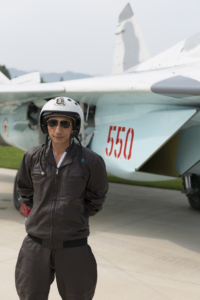Korean People’s Army Air Force: Wonsan Air Festival 2016
Report by Patrick Roegies and Jurgen van Toor
Photos by Patrick Roegies
Introduction
The Democratic People’s Republic of Korea (DPRK) is one of the most isolated nations in the world and from an aviation point of view. Not much is known concerning the aircraft within the operational inventory of their Air Force. Until recently, there were no air shows in the Democratic People’s Republic of Korea (DPRK). Military exercises could only be attended by DPRK leaders and officials on invitation of the government. The very first air show organized in the DPRK took place in September 2016 at Kalma international airport located in the Wonsan Kumgangsan region. Organised by Juche Travel services in cooperation with the Korean International Travel Company, foreign aviation enthusiast organizations like 4Aviation were enabled to attend to the event.
The Kalma airport has received a facelift over the past few years and is reconstructed into an international airport with construction completed in 2015. The infrastructure of the airfield is also modernized and the city of Wonsan now hosts a brand new youth hostel an open air theatre and a restricted town square with the purpose of promoting tourism in this region. The Air Festival event was organized with the purpose to promote the spirit of international peace and friendship through a joint passion towards aviation.
Civil participants
A wide variety of participants took part in the air show. The Wonsan air club, Air Koryo and the DPRK Air Force were the main contributors of the air displays supplemented with remote controlled model aircraft and sky diving performances of the Pyongyang Air Club.
During the Saturday Air Koryo supplied flying displays of the Ilyushin Il-18, Ilyushin Il-62, Ilyushin Il-76, Tupolev Tu-134, Tupolev Tu-154 and Antonov An-26 aircraft and on the Sunday pleasure flights could be made in each individual type.
Furthermore there were air displays of two unmarked aircraft of which one was an Alpi P-400 and the other one was a PAL P-750XL which is probably assigned to the Air Force.
Military participants
The main contributor of the flying displays however was the DPRK Air Force. This was the first time that the DPRK Air Force presented itself to an international audience and several aircraft types were presented.
Formation of the Korean People’s Army Air Force
The Korean People’s Army Air Force (KPAAF) originated shortly after the war on 20 August 1947. The Air Force received a separate status in 1948 and adapted mainly Soviet tactics and doctrine. With their primary appointed mission, the air defense of the homeland, the required assets and resources were organized. As a secondary mission the Air Force was appointed the role to provide tactical air support for the army and naval forces.
The Air Force was soon equipped, with the help from their Soviet allies, who supplied Polikarpov Po-2s and Yakovlev Yak-18s. Since most of the air fields were situated in the south the Air Force was mainly concentrated in the south. The Korean pilots were sent to the Soviet Union and China to receive their pilot training. Soon national aviation schools were opened and joint Soviet – Korean regiments were formed. The first units were equipped with the Li-2 transporters which made regular flights to the Soviet Union and China.

New aircraft were received soon after the construction of the aviation schools were completed and the domestic training program was up and running. Ilyushin Il-10, Lavoshkin La-9, and Yakovlev Yak-9 fighter aircraft were received and formed the backbone of the KPAAF for the remaining decade.
With the outbreak of the Korean war in June 1950 the KPAAF performed most missions during night time. For these missions the Yak-18’s and Po-2’s were modified with bomb racks operating in support of the Army. Since the air-to-air capabilities were minimal since the aircraft in the operational inventory of the KPAAF all dated from the second world war, meant the aircraft which were deployed by the United Nations were superior, and the KPAAF was forced to flee into China operating from Chinese air fields.
During the conflict the KPAAF received the factory new Mikoyan – Gurevich MiG-15 which were operated by Soviet pilots, evened the score in air to air capabilities. During the Korean war period the forward fuselages of most of the MiG-15 aircraft were painted in bright red for quick identification purposes. In the course of 1952 these bright red markings were removed and the aircraft were pained in various different new camouflage schemes. By the time the armistice agreement was signed on 27 July 1953, the Air Force had the disposal of approximately several hundreds of MiG-15 Fagot B’s and MiG-15 Midgets which were left behind by the Soviet Regiments that operated the aircraft while being deployed in North Korea.

The existing air fields that were severely damaged during the conflict were abandoned and new air fields were constructed in the Democratic People’s Republic of Korea using underground aircraft hangars, repair facilities, ammunition, fuel stores, and even air defense missiles underground or in hardened shelters, in some occasions constructed in the surrounding mountains.
The fighter variants of the MiG-15 remained in active service until the late fifties and early sixties by the newer Mikoyan – Gurevich MiG-17 fighters when the aircraft were gradually replaced, while the trainer variant, the MiG-15UTI remained in active service until well in the eighties.
At the start of the sixties the KPAAF received their initial batch of twenty-four Soviet built Ilyushin Il-28 bomber aircraft. When the delivery was completed of the first batch, Chinese license built versions of the Il-28 the Harbin H-5 were acquired. These aircraft were appointed a wide variety of tasks which resulted in different configurations of the H-5 enabling them to fulfil the bomber, reconnaissance and conversion trainer role. According to estimations a total of eighty-two Il-28 and H-5 aircraft were delivered to the KPAAF.
In 1961, a treaty of mutual assistance and military cooperation was signed between The DPRK and The Soviet Union. In accordance with this treaty, between 1961 and 1962, Mikoyan – Gurevich MiG-19’s were delivered and the first MiG-21 variants were received from the Soviet Union. An initial batch of factory new MiG-21F-13’s were received in 1963, including a number of MiG-21 trainers. Another acquisition of a MiG-21 subtype took place in 1968 when the Air Force took delivery of factory new MiG-21PFM’s.
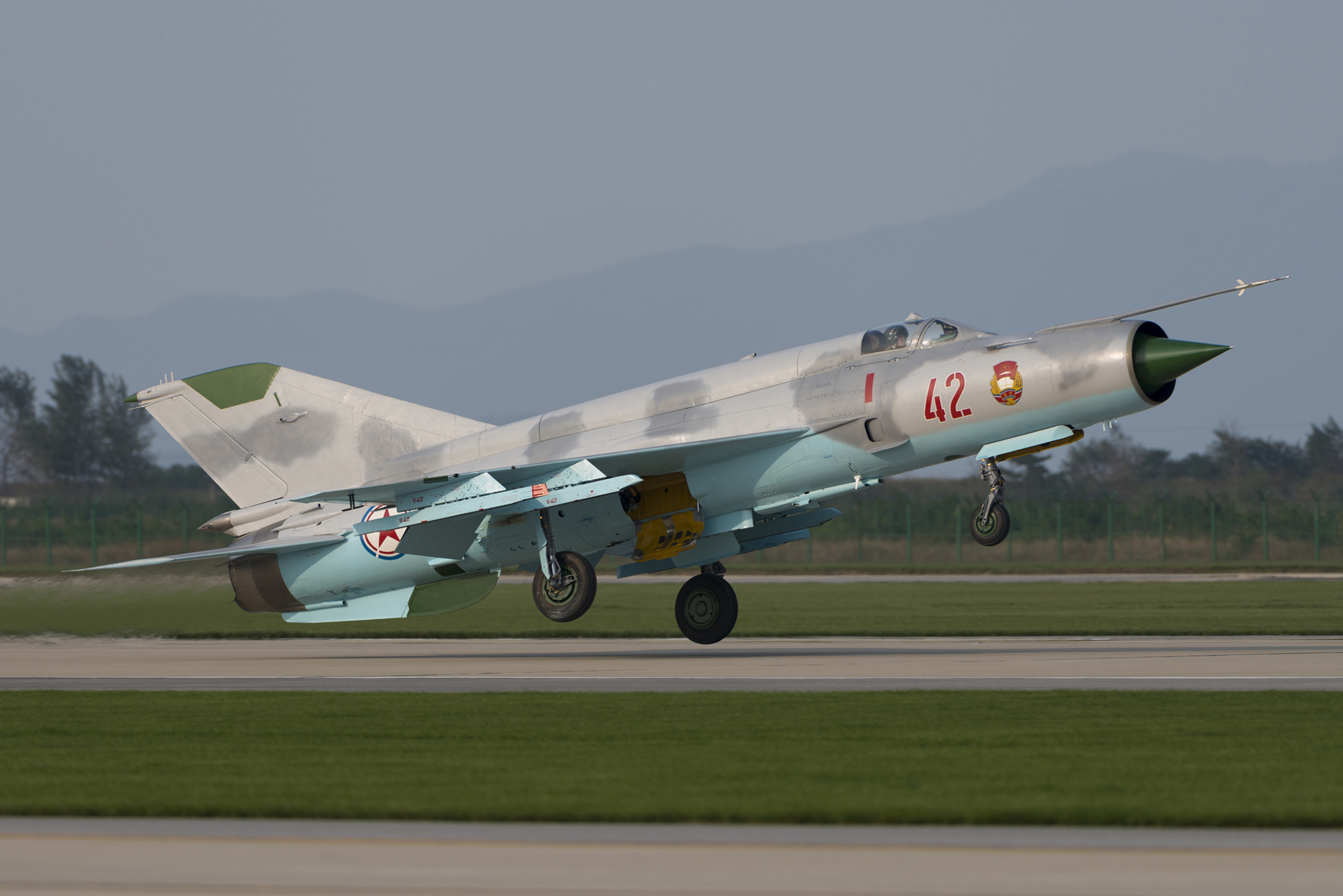
In the seventies, the supersonic fighter bomber made its appearance within the inventory of the KPAAF with the delivery of the Sukhoi Su-7. The KPAAF took delivery of 25 Su-7BMK’s and Su-7UMK’s. These aircraft were in service appointed to a single yet unknown Regiment with two subordinating squadrons and remained in active service until the mid-nineties.
Also in the seventies an estimated total of 60 let L-39 aircraft were delivered to the KPAAF fulfilling the trainer role.
From China the Q-5 Fantan ground attack aircraft were received to supplement the fighter bomber fleet. According to several unconfirmed sources the total estimated amount of aircraft received varies between 40 and 150 aircraft.
During the seventies and eighties additional Chinese built aircraft were introduced within the operational inventory of the air force as well supplementing the mainly Soviet built fleet. The Air Force took delivery of Chinese built Shenyang F-6 and Chengdu F-7 aircraft. During that same decade they also received the Sukhoi Su-7, Sukhoi Su-25, the Mikoyan – Gurevich MiG-23 and Mikoyan – Gurevich MiG-29 from the Soviets.
The Mikoyan – Gurevich MiG-23 was introduced in the inventory of the KPAAF in September 1984 when the Air Force took delivery of eight MiG-23ML aircraft and two MiG-23UB trainers. Additional deliveries took place and comprised a total of forty MiG-23ML’s and ten MiG-23UB’s. The estimated total of 60 Floggers were operated by the 56th Regiment based at Oksan Air Base and he 57th Regiment based at Onchon Air Base.
Another subtype of the MiG-21 was integrated in the KPAAF inventory was the MiG-21MF which were acquired second hand from the Soviet Air Force and initial deliveries took place from 1985 forward.
In 1985, the DPRK also received an unconfirmed number of Hughes MD500 Helicopters by circumventing the export control and UN weapons embargo. Although the configuration of these helicopters were according to civilian versions the KPAAF has modified these helicopters for military purposes. Six of these helicopters were noted during the Wonsan Air Festival 2016 in full military markings. Also the rotary capabilities were increased and comprised approximately 275 helicopters by the end of the eighties, mainly consisting of Mil Mi-2, Mil Mi-4, Mil Mi-8 and a handful of Mil Mi-26 helicopters.
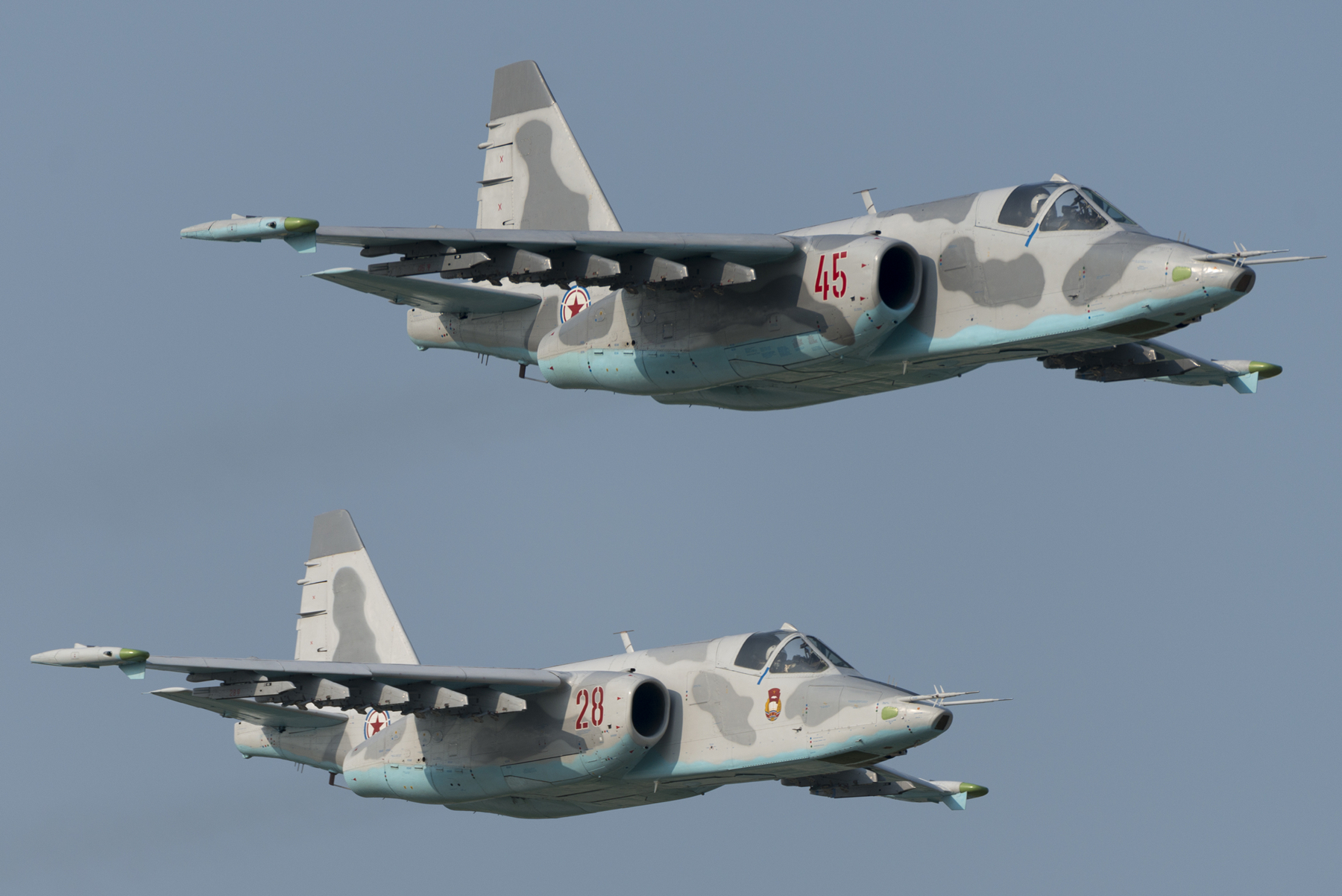
The first batch of twelve Sukhoi Su-25K Frogfoot aircraft and two Sukhoi Su-25UB training aircraft were ferried by pilots of Soviet Union Regiments and have been delivered in late 1987 to the DPRK Air Force. These aircraft formed the first squadron of a regiment based at Sonchon located approximately 80 kilometers from Pyonyang. The aircraft delivered were all within the construction number range of the “early 10th series” with their construction numbers ending with the following number range 10xxx.
A second batch of Su-25K and Su-25UBK aircraft were delivered in the spring of 1988 and were assigned to the second squadron within the regiment and a third identical squadron received their Su-25K’s in two batches, with the first batch delivered in the summer and the second batch in the autumn of 1988. According to estimations the DPRK Air Force received approximately 36 Su-25K’s and 4 Su-25UB’s
The bort numbers used to be blue and the aircraft were painted in a two tone green and brown camouflage scheme. Their current camouflage scheme is a two tone grey scheme and the aircraft are appointed red bort numbers.
The first MiG-29 aircraft were received between 1988 and 1989 and according to unconfirmed sources the KPAAF received aircraft to equip one or two squadrons of MiG-29’s. Reports concerning actual deliveries vary from seventeen to forty-five.
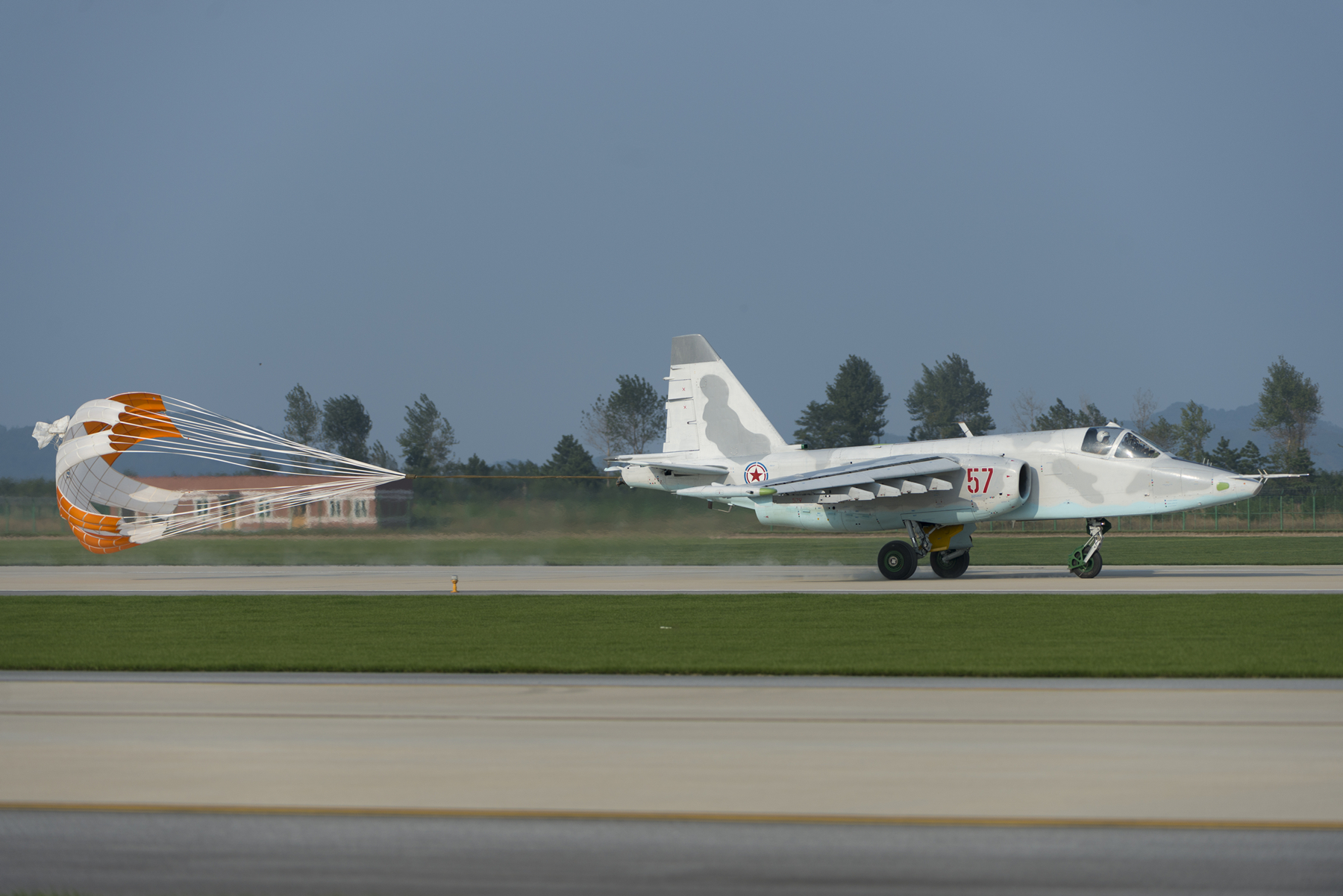
Actual deliveries took place in 1988 acquired from the Soviet Union and delivered by Mikoyan OKB. The delivery comprised thirteen izdelye 9.12B MiG-29 Fulcrum A and one izdelye 9.51 MiG-29UB Fulcrum B aircraft. The delivery of this initial batch took place until 1992 when the last aircraft was delivered. These aircraft were all constructed in Russia by Mikoyan OKB possibly in the 36th batch with construction number built up 257xx range.
Since North Korea was the second Asian country to acquire the MiG-29 they were the sole country to purchase a manufacturing license of the MiG-29 and it was the sole country to actually receive the the izdelye 9-13B MiG-29 Fulcrum C version.
A follow up contract in the early nineties comprised the delivery of these ten izdelye 9.13B MiG-29 Fulcrum C to be assembled by the seventh machine industry bureau located at Panghyon which was a serious first attempt to start a domestic aircraft industry. This endeavour proved to be too ambitious for the DPRK and progress remained far behind schedule. Due to major delays in the assembly process and complications in payment terms for the aircraft, which was taken place in goods, the Russian government decided to abandon the program and up to that point only three aircraft were assembled completely. With the cease of deliveries of components the DPRK ceased the pursue of the plans for a MiG-29 fleet comprising forty aircraft. As a consequence the remaining delivered sub-assemblies of the izdelye 9.13B aircraft were never completed and probably cannibalized to keep the operational fleet active by using the spare parts.
The MiG-29 aircraft acquired in the first batch were appointed with a three digit 5xx serial number. Aircraft have been noted in the 540 and 550 serial range. The three izdelye 9.13B aircraft received deviating serial numbers. Serial number 415 was noted in the past and should be a reference to the birthday of the supreme leader Kim Il-Sung II who was born on 15 April 1912. The second known serial number 820 refers to the formation of the Air Force which took place on 20 August 1948. The serial number of the third one remains unknown.
With the cease of the Soviet Union and a visit to the DPRK of Boris Yeltsin further deliveries of aircraft and spare parts were ceased, since further deliveries were banned according to the United Nations arms embargo enforced on Russia. By the end of the nineties a new formal request was submitted by the DPRK to Russia for the delivery of spare parts which, eventually resulted in actual deliveries of spare parts enabling the KPAAF to maintain its operational Fulcrum inventory until well in the new century.
The Fulcrums were appointed to the 55th Kumsong Guards Air Regiment subordinated to the 1st Combat Division at Sunchon Air Base comprising two squadrons. The current operational strength of the Regiment is estimated at fifteen aircraft of which at least five are still in an active condition operating on a rotation basis.
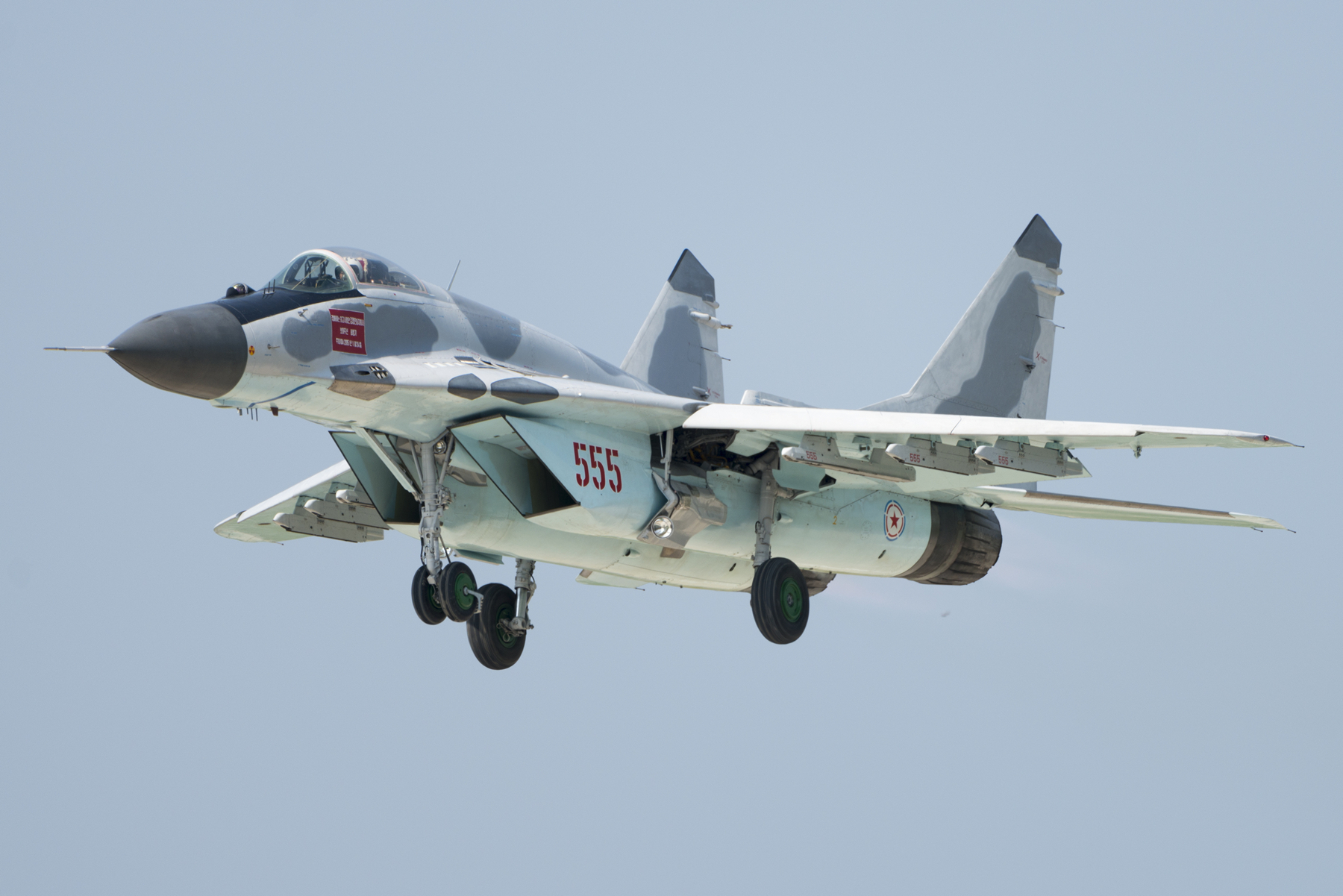
The last known delivery of aircraft took place in the nineties. An additional intended forty, second hand MiG-21bis aircraft were acquired from Kazakhstan in the late nineties. Since this delivery was in conflict with the weapons embargo as enforced by the United Nations deliveries were ceased when one shipment consisting of six aircraft was intercepted at Baku Azerbaijan only thirty were actually delivered. According to estimations a total of 400 MiG-21’s were received and an estimated total of 100-150 aircraft are believed to be operational currently.
Current situation
Fighter and fighter-bomber Regiments
Although the MiG-29 is the most modern fighter within the KPAAF the MiG-21 is still the backbone of the Air Force. In the early 1nineties the operational strength of the KPAAF comprised a total of an estimated 1620 aircraft and 70.000 personnel.
The KPAAF is unable to purchase new aircraft given the still active United Nations arms embargo against the country, meaning their previous conventional aircraft suppliers are unable to supply the KPAAF with newer aircraft. The last attempt to purchase the Chinese built JH-7 aircraft failed since the request for purchase was turned down by China.
Besides the purchase of new aircraft the acquisition of required spare parts has ceased as well leading to direct problems with the existing aircraft within the inventory mainly consisting of Su-25, MiG-21 and MiG-29 supplemented by the remaining Shenyang F-6 and Shenyang F-7 aircraft. The limited spare parts that could be acquired were probably supplied by the friendly states Cuba and Iran.

The same problem occurs with the remaining training, transport and rotary aircraft within the operational inventory of the KPAAF. In order to save fuel and spare the engines and other critical parts MiG-29 pilots are flying the MiG-21.
Approximately fifty Harbin H-5 aircraft, the Chinese license built version of the Il-28 in the configurations of bomber, reconnaissance and conversion trainer versions are believed to be operational. These aircraft assigned to two active Regiments are probably undertaking none-operational missions such as target-towing in addition to more offensive tasks.
Training Regiments
Training aircraft still date from the sixties and does not reflect the requirement to train future pilots preparing them for supersonic flying. Pilot training is mainly performed using the Nanching CJ-6 as the primary trainer before the future pilots continue their fighter training in the remaining two-seat MiG-15UTI supplemented by a small number of Aero L-39C Albatrosses. Helicopter training is provided using the Mil Mi-2 helicopters. Like much of the Democratic People’s Republic of Korea Air Force, the effectiveness of the training syllabus is debatable.
Transport Regiments
The KPAAF uses the Soviet designed Antonov An-2 and Chinese license built Y-5 as their main transport aircraft and has received the aircraft in large numbers. According to estimations a total of two-hundred-seventy An-2 and Y-5 aircraft were received. Additionally the KPAAF has the disposal over approximately ten Antonov An-24 transport aircraft and modest fleet of semi-military Ilyushin Il-76 transport aircraft. A small number of Soviet-era like the Tu-134, and the Tu-154 transports in service are painted in the livery Air Koryo to facilitate VIP flights overseas.
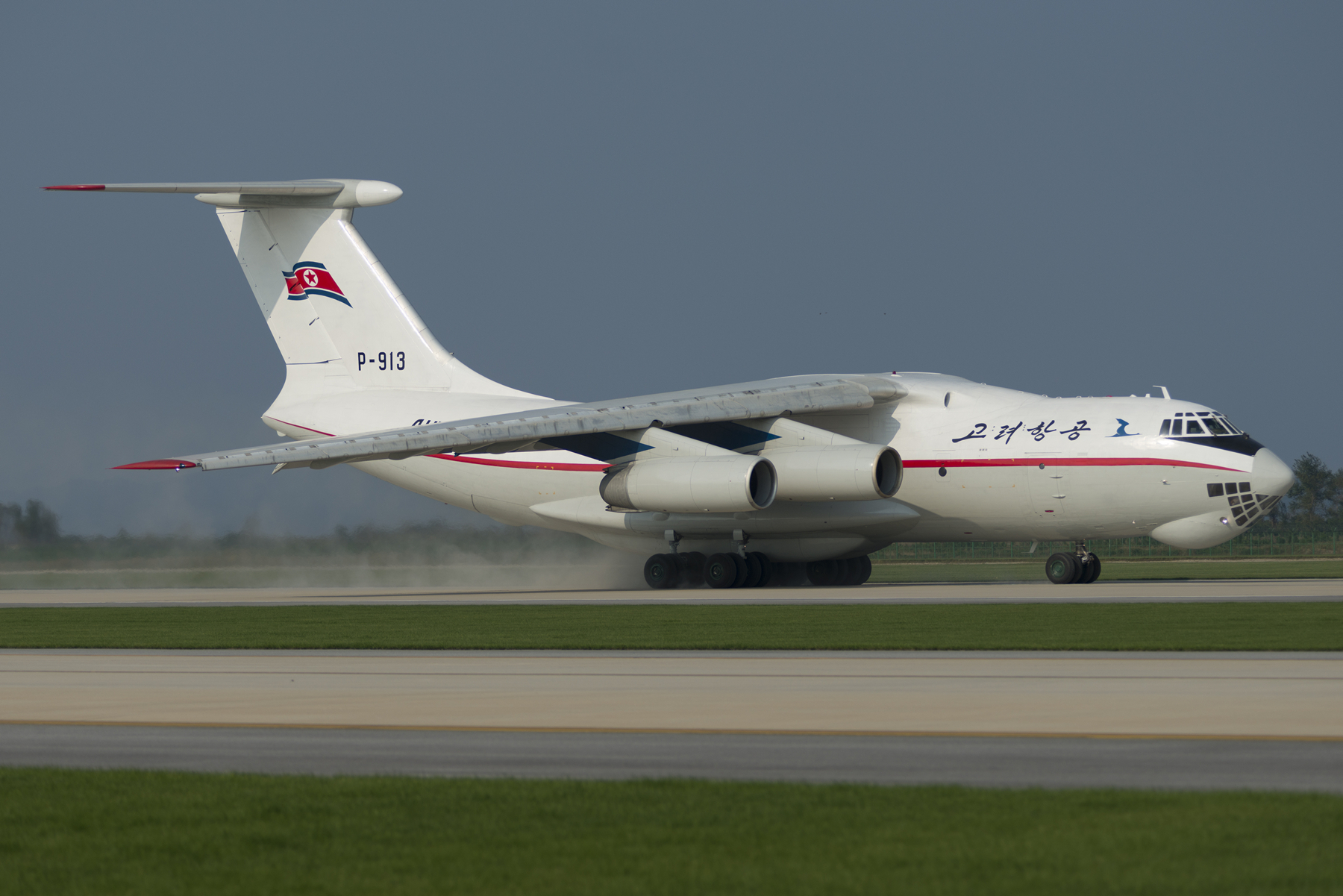
Helicopter Regiments
The KPAAF currently still operated the Mi-2, Mi-4 and a small number of Mi-8 helicopters supplemented by the MD500 helicopters for special operation tasks. In recent obeservations a batch of four Mi-26’s have been noted as well. It remains unclear how many of the estimated 275 acquired helicopters are still in active service. There are reports of Mil Mi-24 Hind within the operational inventory of the KPAAF but no actual proof of this has been provided.
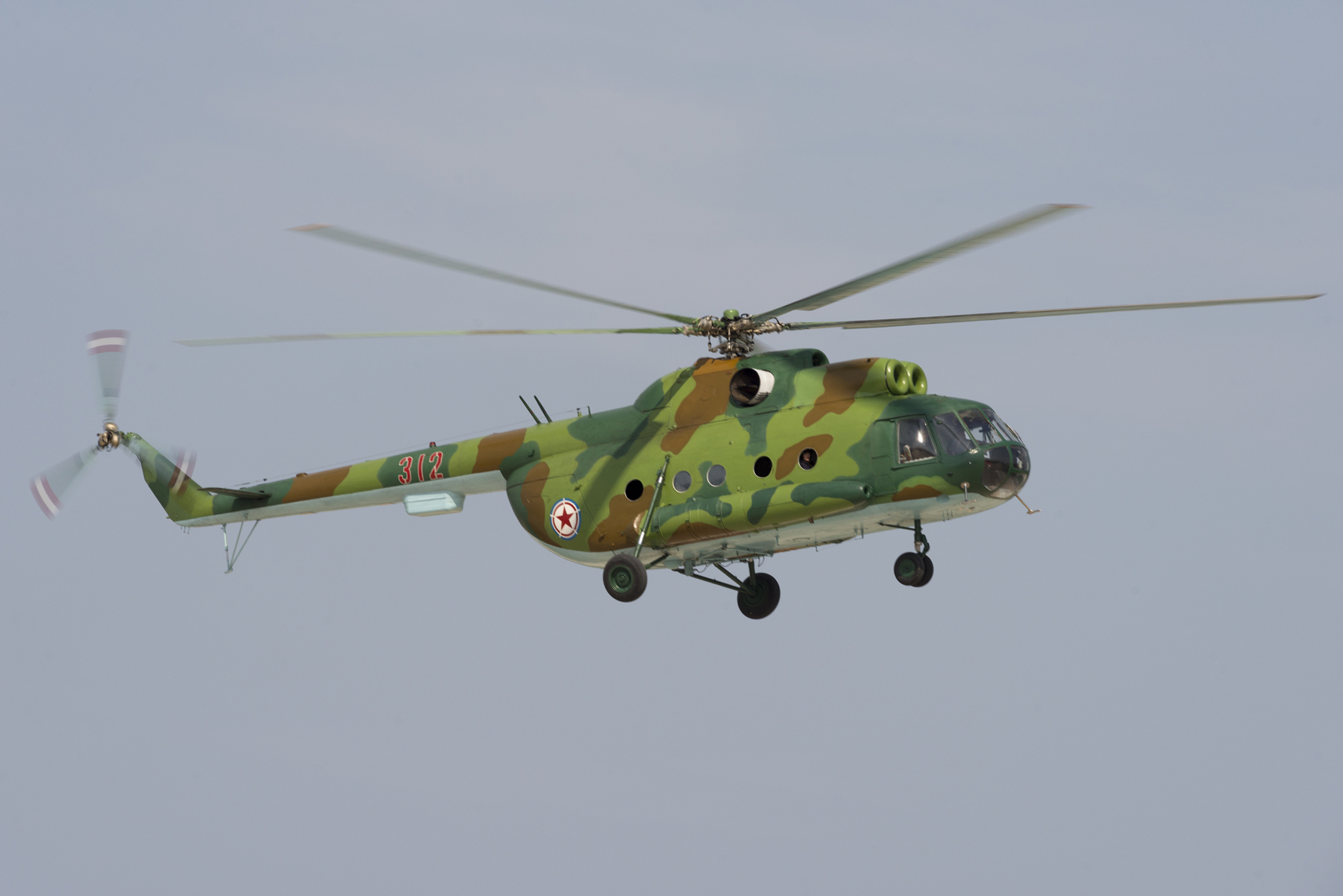
Order of Battle
The actual order of battle is complicated since a unit can have multiple designations since the centralized command appoints a unit with a name during peace-time, alert-time and war-time status. In all three status the unit can have another designation, divided in an air unit, regiment/battalion and an heroic name designation.
The air commands appear to have the primary responsibility for integrated air defense and are organized with a semi-automated warning and interception systems to control the surface to air missiles, interceptor aircraft, and air defense artillery units. The territory of North Korea is divided in Three major districts and has assigned its own Air Combat Command.
The First Air Combat Command is situated in the northwest, probably headquartered at Kaechon, is responsible for the west coast to the border with China, including Pyongyang.
The headquarters of the Second Air Combat Command is situated at Toksan and is responsible for the northeast and extends up the east coast to the Soviet border.

The headquarters of the Third Air Combat Command is situated at Hwangju in the south and is responsible for the border with South Korea and the southernmost areas along the east and west coasts.
From 1996 onwards, the North Korean Army Air Force had six air divisions at it’s disposal under the direct control of the National Air Command. Of these six air divisions three were appointed fighter aircraft, two had transportation aircraft appointed, and one air division consisted of fighter training aircraft.
Currently North Korea operates from approximately seventy air bases, including jet and non-jet capable bases and emergency landing strips. Although not all 70 air bases have active regiments based the bases are kept in an operational status. Besides these airbases the Air Force has appointed a number of highway strips which can be used in case of emergencies during future conflicts. The majority of tactical aircraft are concentrated at air bases around Pyongyang and in the southern provinces.
The North Korean Air Force has the capabilities to put almost all of the military aircraft within their inventory in hardened shelters with some of them located underground or inside mountain caves.
With the aging fleet the KPAAF has a limited capability in performing their appointed tasks the defense of the North Korean air space, providing tactical support to the army and naval forces and conduction air operations against South Korea. With the restricted use of assets due to fuel and spare part shortages might affect the annual amount of hours performed by pilots in the KPAAF.
Aircraft industries
Since serious attempts in the past to start a domestic aircraft had failed, the aircraft industry in North Korea is limited. With the assembly of the MiG-29 the basis for a national aircraft manufacturer seemed viable, but for yet unknown reasons this development was not further pursued, possibly due to lacking technological means and know how. The aircraft industry within the DPRK is limited to constructing the required spare parts for the aircraft in their existing operational inventory.
With the weapon embargo being enforced by the United Nations and the lack of a domestic aircraft industry the DPRK was forced to find other means to find alternatives to replace their aging fleet of aircraft with the oldest models dating from the sixties.
Aircraft deliveries during the United Nations weapons embargo
The first delivery of aircraft to the DPRK took place in 1985 comprising the delivery of an estimated total of United States manufactured civilian version of eighty-seven MD5000 Hughes helicopters which were indirectly acquired by means of an illegal transaction. The two Californian brothers Semler made false statements in shippers declarations to the united States Customs Service in 1984 stating that the helicopters were intended for delivery to Germany when in fact the helicopters were to be delivered to North Korea.
In 1996 the DPRK intended to purchase 133 surplus MiG-21 aircraft from the Kazakhstan Air Defense Force. The company operating under the auspices of the Kazakh Ministry of Defense ”Kazvoyentekhimpex” drafted a contract with a total value of 28 Million USD. When these plans became known to the United States State Department the Kazakh government was contacted and resulted in the withdrawal of the contract.
The DPRK government however did not abandon the plan to acquire these aircraft and in early 1997 and a formal request was submitted to Kazakhstani Defense Minister M. Altynbayev by the Sierra Leone ambassador to Moscow informing the delivery of the 133 Mig-21bis aircraft intended for Sierra Leone. Later that year a similar request followed submitted by Peru.
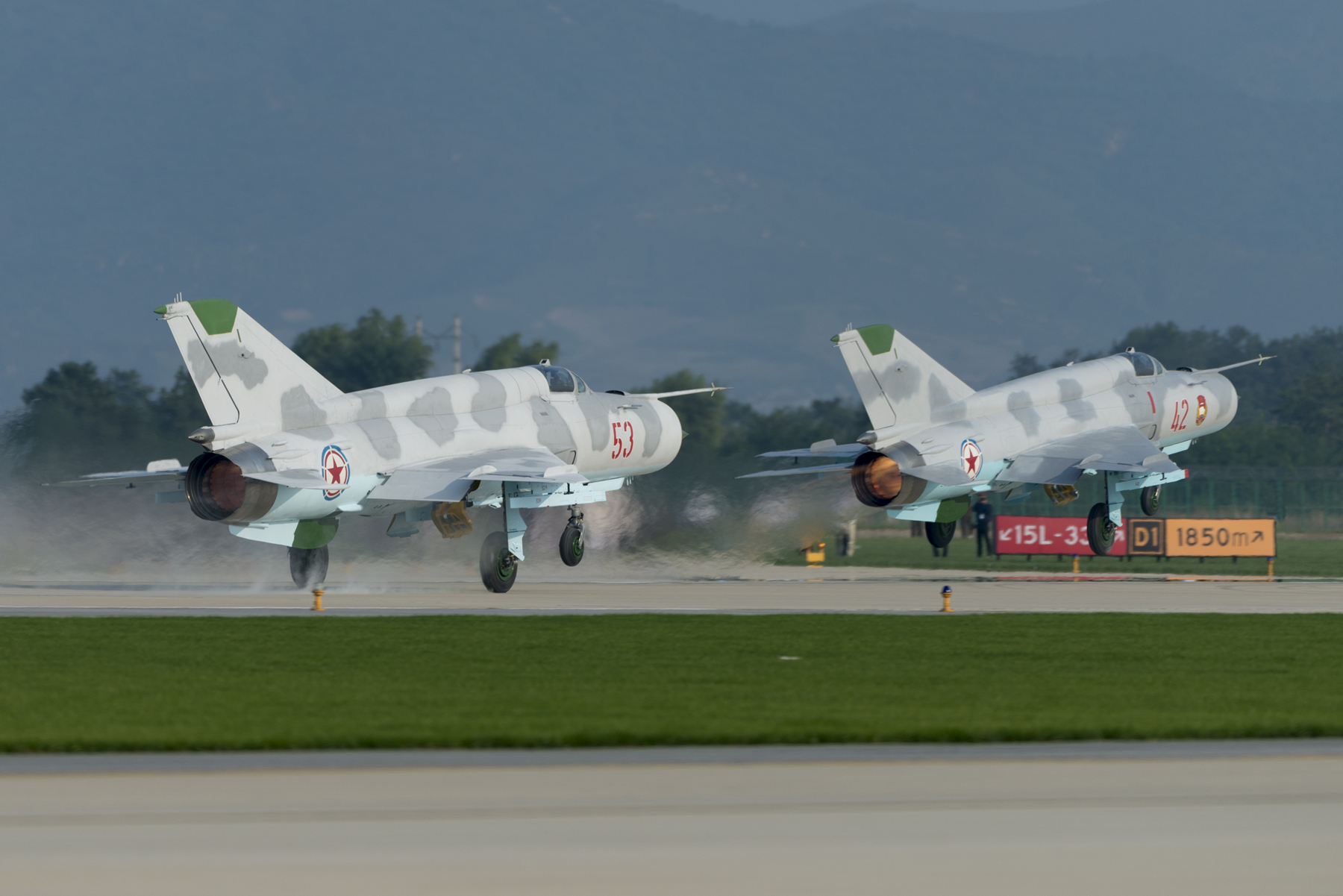
After several failed attempts another way was found to deliver the MiG-21bis aircraft to North Korea but failed with deliveries well underway. The delivery of an intended six MiG-21bis aircraft including spare parts was intercepted in Baku, Azerbaijan in March 1999 on board of a Russian transport aircraft which was officially listed as a sugar transport to the DPRK and raised a serious international scandal. On 14 October 1998 a contract was signed between the DPRK and Czech based company Agroplast comprising the delivery of 40 MiG-21bis aircraft were to be delivered to Agroplast and were to be passed on to North Korea. The aircraft were to be purchased from the Kazakhstan owned Uralsk Metallist Plant which derived the aircraft earmarked as surplus by the Kazakstan Air Defense Force. This resulted in November 1999 to the companies directly involved with this contract. During investigations it became clear that the transaction was taking place against the official government policy of Kazakhstan and deputy prime minister and minister of foreign affairs K. Tokayev promised to actively cooperate in the investigation of the follow up of this sale. As a result the Kazakhstan government finally admitted that the MiG aircraft were sold to the DPRK and that five previous shipments comprising a total of 30 MiG-21bis aircraft had already successfully taken place before the shipment was intercepted in 1999.
Modernization programs
Since the most recent aircraft which are still in the operational inventory of the Korean Air Force were acquired from 1960 until 1990, modernization programs are likely to be conducted on the operational aircraft. The aircraft presented at the Wonsan Air Festival 2016 were all provided with a new camouflage scheme and looked like they were subjected to an extensive modernization program only recently. Details concerning modernizations remain unclear but unconfirmed sources state that aircraft might have been refurbished by using Belarusian and Cuban resources. If these modernization programs took place in North Korea or abroad remains unclear as well.
Conclusion
Although lots of information remains unknown concerning the KPAAF and the quest for information is difficult the threshold to a more open environment seems to have started with the organization of the Wonsan Open Air Festival. During the closing ceremony of the festival the officials announced there will be a new Air Festival organized in 2017 also open to be visited by foreigners.
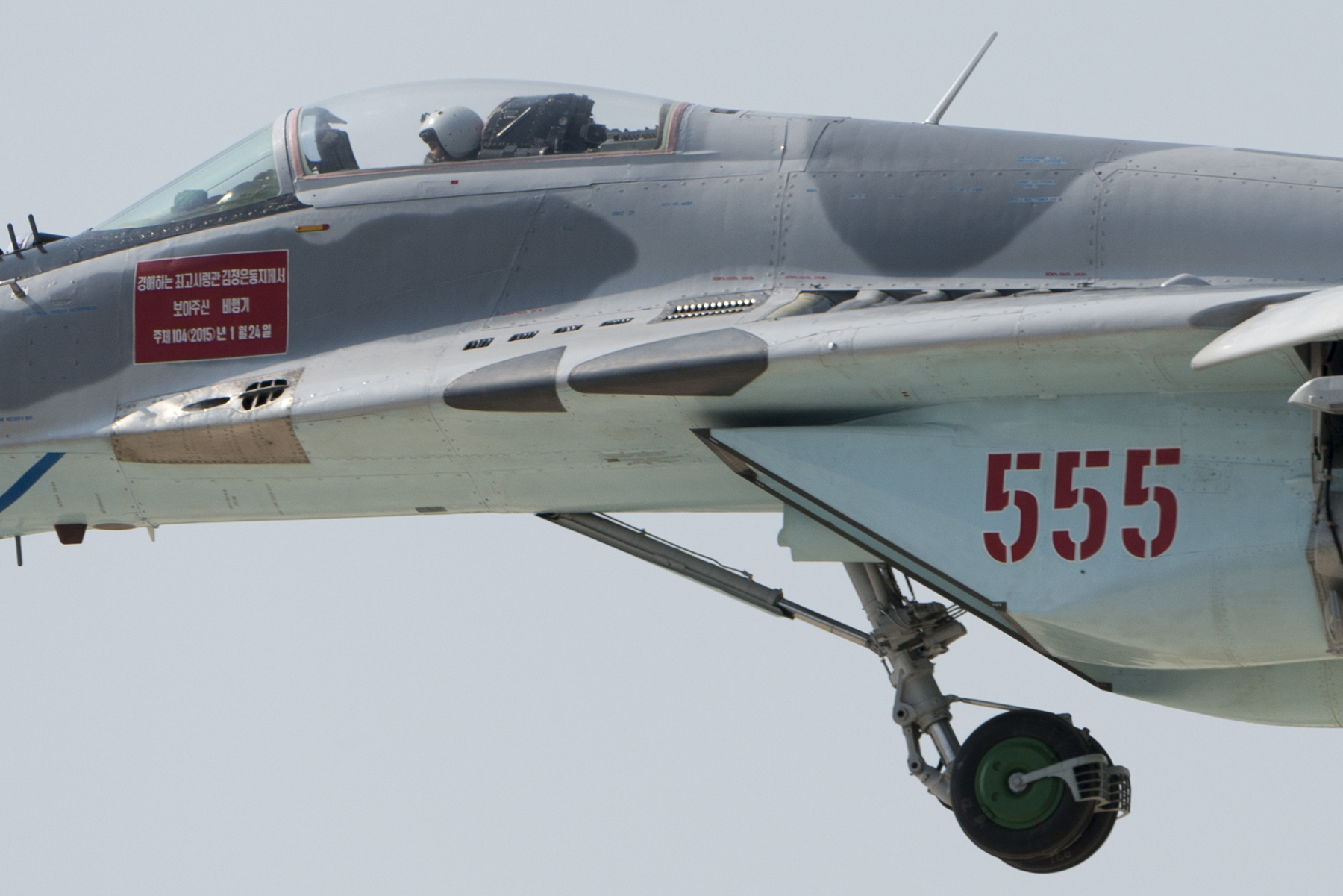
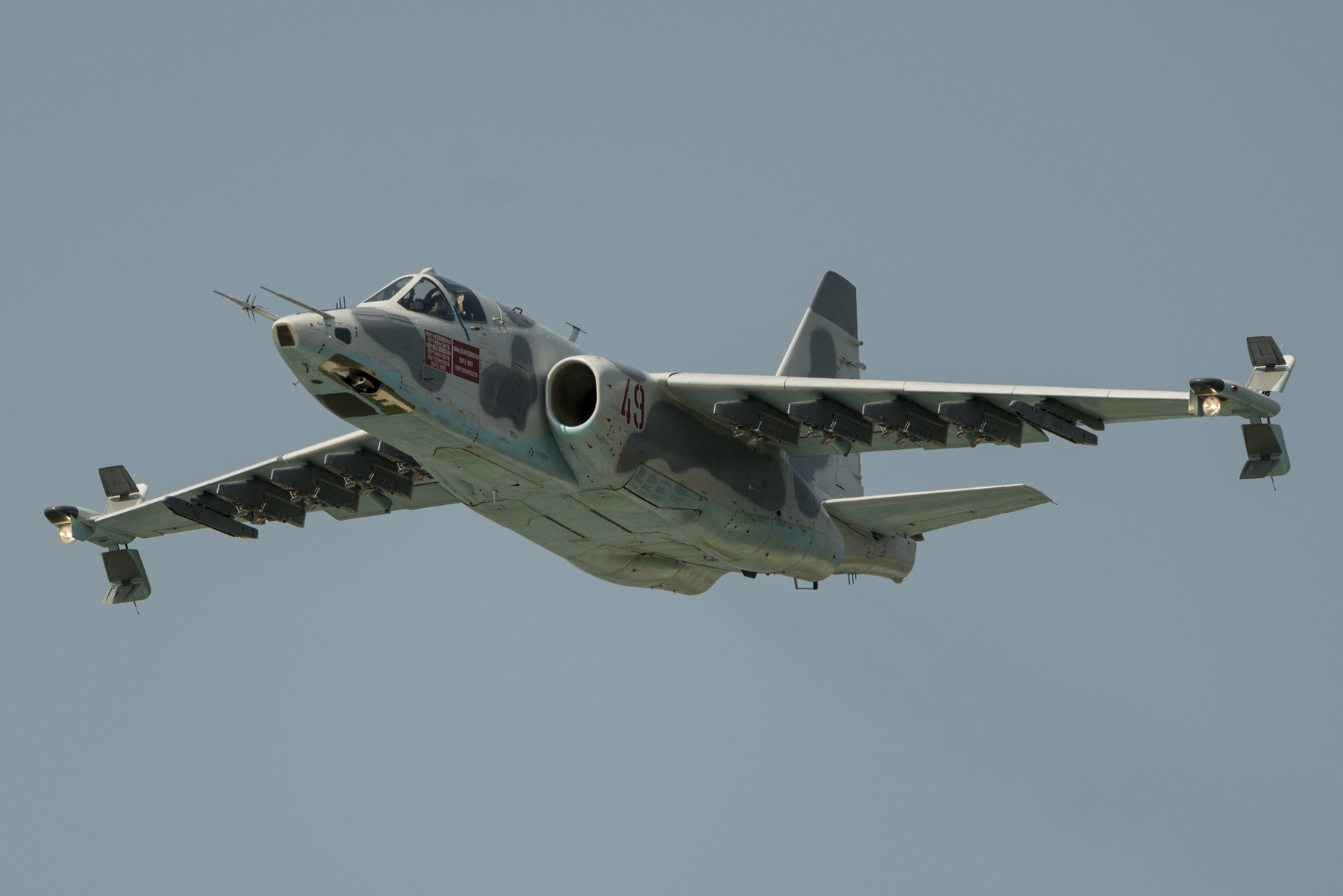



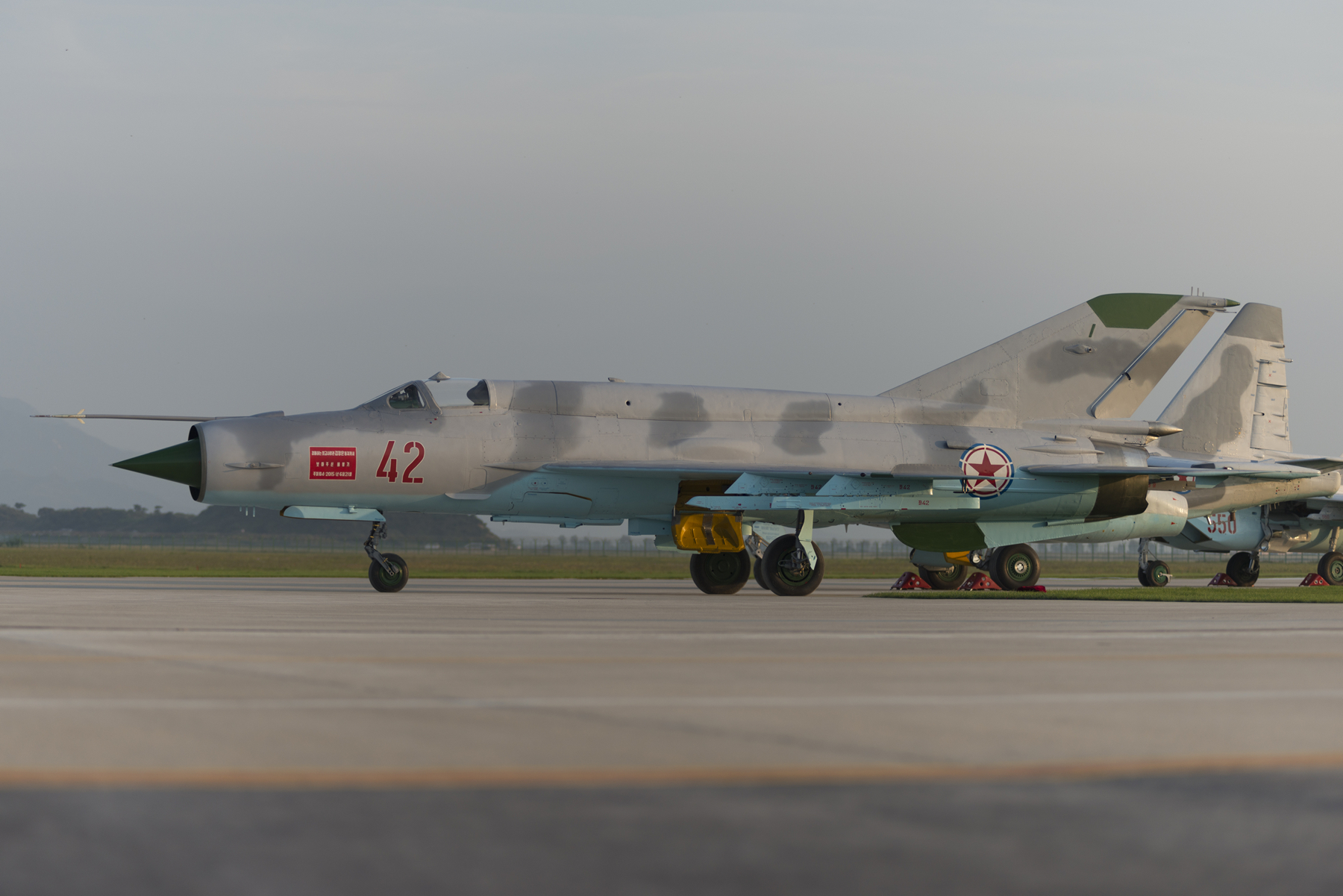
Click on an image below to page or swipe through the gallery:
Patrick Roegies is born and raised in Tilburg, the Netherlands and currently resides in Sittard in the south of the Netherlands where he lives with his wife Joyce. Patrick graduated from a technical study at the HTS in Tilburg in 1997. He currently works as a head of an equipment engineering department in the south of the Netherlands.
His passion towards aviation started at the age of 7 in 1977 when his father took him to nearby Gilze Rijen Air Force base where he witnessed his first howling F-104 Starfighters which were practicing and as a result he got addicted immediately. The F-104’s were present in order to determine a tactic to create a diversion for the “train highjack” which was going on in the Netherlands at that time. The F-104’s were meant to create a diversion by performing an overshoot, kicking in the afterburner directly over the train, creating confusion with the hijackers and enabling the police to master the hijackers. This action has actually been performed and worked.
This is when his passion towards aviation was born. He got permission from his parents to visit the airbase every free hour he had and his father showed him the way by bicycle. Patrick got his first camera in 1984 which was a Canon T50 and shot Kodachrome 64 slides of mainly military aircraft. He changed his gear in the mid-nineties to Nikon and is a Nikon user ever since.
When Patrick obtained his driver license in 1989 he started to visit airbases all over Europe and from 1997 onwards he made worldwide visits to military airbases.
In order to further professionalize his work as an aviation photographer and journalist he started to write military aviation related articles based upon his visits to various nations and their Air Forces. He managed to publish his first article in 2003 and increased the numbers of publications every year.
Patrick can be reached at: [email protected]



